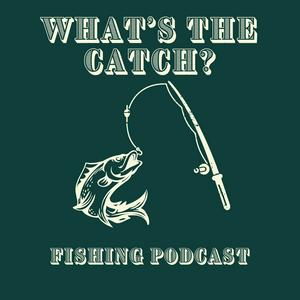What’s The Catch? The PodcastEpisode Title: Somewhere Over The RainbowEpisode #4You are listening to What’s The Catch? the podcast with your host Andrew Rowan.In this episode of What’s The Catch? We’re gonna be talking about the Rainbow Trout:what they are, where to find them, how to catch them, and why you should want to catch them. Segment 1: Species BackgroundThe Rainbow Trout is a freshwater fish native to North America. They get their name because of the beautiful coloration on the sides of their body. They also are a part of the same family as salmon. These guys average length is around 20-30 inches and weigh between 8 pounds. The average lifespan is around 3-4 years.Fun FactsBiggest Rainbow trout ever caught: 48 lbs caught by Sean Konrad on September 5th,2009They always end up returning to their birth placeThey can lay thousands of eggs at one timeThere are fifteen subspecies of rainbow troutSegment 2: Where can I find them?Historically, Rainbow Trout have lived in rivers in lakes west of the Rocky Mountains, most densely populated in the Pacific Northwest area of the country. However, thanks to Trout being a very popular fish for farming, they’ve been able to spread to pretty much the whole country by stocking local lakes, rivers, and streams.Places near/in HopewellStony Brook Creek, Pennington: Rosedale parkAqueduct next to the Delaware river, TitusvilleMolders fishing preserve, Monroe TownshipMusky Trout Hatchery, AsburySegment 3: How can I catch them?Rods to useSpinning rodFly fishing rod


